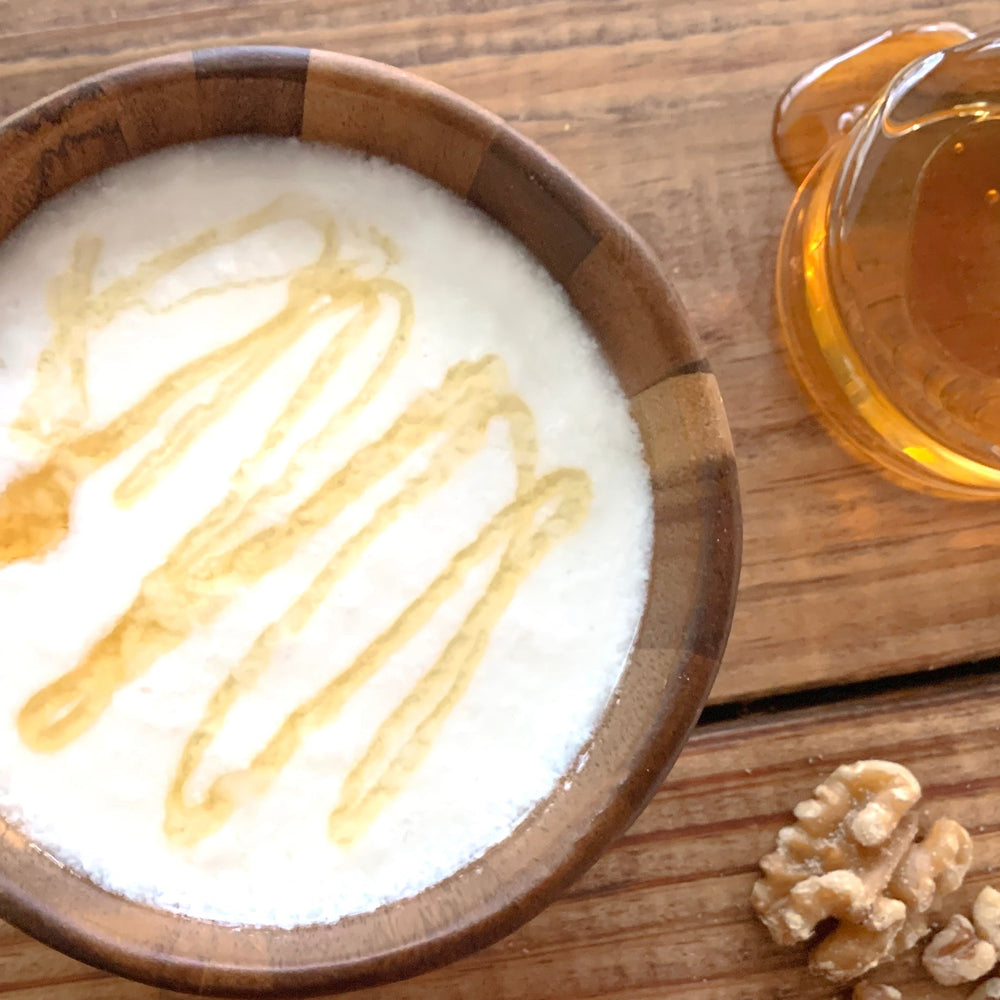
Matsoni traces its origins from ancient Georgia and Armenia. In Georgia, it’s called Matsoni; however, in Armenia, its called Matzoon.
There are written accounts from old Medieval Armenian manuscripts from the 11th, 13th and 14th century. For Georgia, the first recorded mention of Matsoni comes from a 15th century medical book Karabadini by Zaza Panaskerteli-Tsitsishvili.
It was later introduced to the United States through Armenian immigrants arounds 1929 where they went around in a horse drawn wagon selling what they called “Madzoon”.
It’s still wildly popular in Georgia and Armenia as well as many other countries now.
The dominate strains of Matsoni are lactobacillus delbruekii, Lactococcus lactis ssp. Cremoris, streptococcus thermophilus and acetobacter orientalis.
Is Matzoon the same as Caspian sea yogurt?
No it is not. Despite many websites claiming that they are the same thing a study showed that the bacteria and yeast as well as the consistency was very different. The Caspian Sea yogurt originates from Japan which is quite a long distance from Georgia and Armenia.
How is Matsoni different to regular yogurt?
Matsoni is a mesophilic yogurt which means that it ferments at room temperature. So, there is no heating required like regular yogurt, which makes it a lot easier and convenient.
The flavor is generally less sour than regular yogurt. Matsoni a very smooth and only slightly tangy yogurt. One unique quality Matsoni is know for is the subtle notes of honey permeating through. Its thickness is moderately custard like. - somewhere between filmjolk and long viili.
Traditionally its eaten plain, or with honey or walnuts or fruit.

It's also used to make many nourishing soups and dishes. One of the most popular dishes in Georgia is called Khachapuri which is a type of cheese bread.
Health Benefits
Like most yogurts, it has the basic benefits of adding beneficial bacteria, bio-available vitamins, lactic acid, and the production of short chain fatty acids.
Matsoni has a lower glycemic index than milk which helps lower blood sugar spikes. Its GI is about 20.
Calories are relatively low - it is about 63 calories per hundred grams.
In Georgia, it is quite common to recommend Matsoni to help increase breast supply milk.
One of the strains in Matsoni is streptococcus thermophilus, has many health benefits including helping lactose intolerant people be able to consume it.
Bottom Line
Matsoni is fun, delicious and healthy. It's hugely popular in Georgia and Armenia where it originated from. It's become more popular all over the world now.
It is slightly tangy with a smooth light custard type texture. Overall, its quite mild with slight notes of honey permeating through. You can eat it plain or add some honey, walnuts or fruit.
Matsoni has low calories and a relatively low glycemic index. It also has strains such as streptococcus thermophilus that is thought help with the lactose and other health benefits.
Matsoni is an easy alternative to making traditional yogurt as there is no heating required.
This unique mild custard yogurt is treasured by many around the world.


Leave a comment